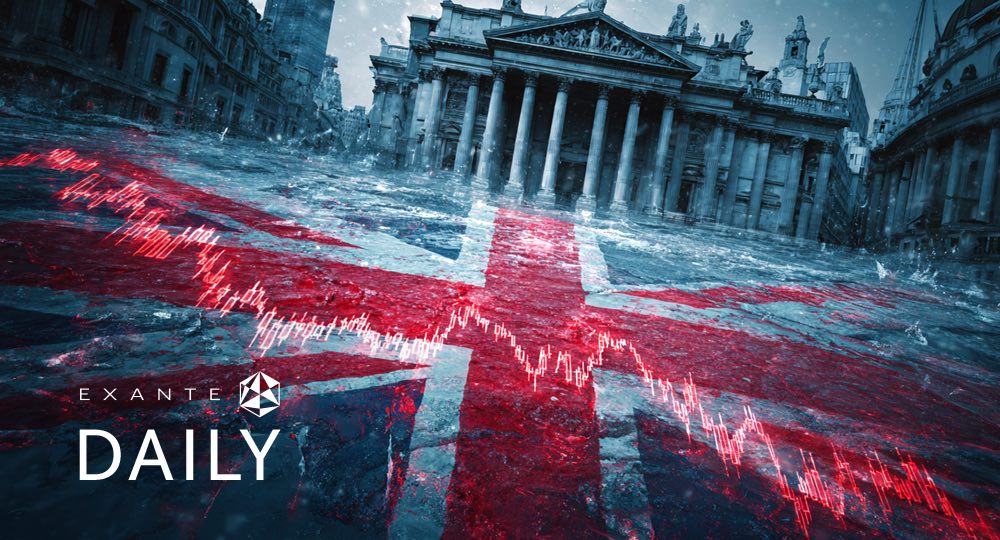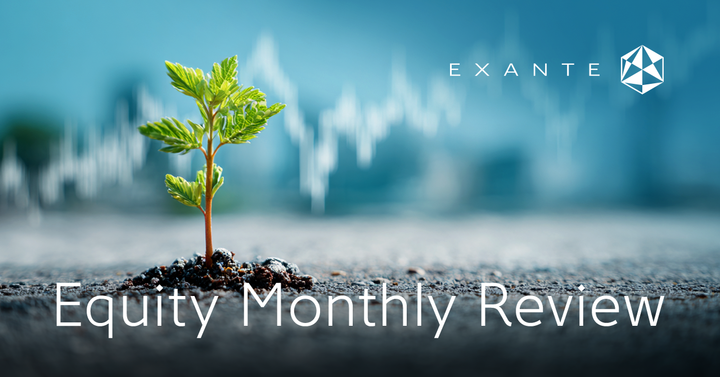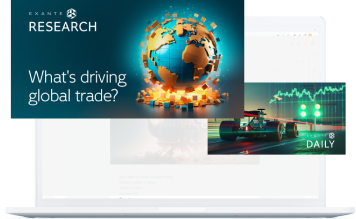By Renée Friedman, PhD
The week in summary:
Welcome to the 5th in our Macro Insights series. Over the last week we’ve seen flatter treasury yields emerging as concerns over the speed of growth due to labour and supply constraints continue. The S&P 500 reached a new high this past week based on solid tech stock performance, while industrials and consumer goods were the biggest losers. The DAX underperformed this past week after the Bundesbank, Germany’s central bank, cut its 2021 growth forecast, causing a fall in Bund yields. In general we saw a flattening of sovereign bonds short and long term rates this week as central banks, with the notable exception of the ECB, are making significant noises about containing inflation expectations. However, global equities have remained surprisingly resilient despite price pressures from continuing supply chain disruptions and bottlenecks and higher energy costs. Following last week’s record $66,976, bitcoin was extremely volatile this week, falling to around $61,500 on Thursday. Reasons vary but are most likely due to low liquidity levels.

The big data news this past week was US GDP growth and the ECB rate decision, both on Thursday. Although the US economy slowed more than consensus forecasts due to Hurricane Ida, the resurgence of the Delta variant during Q3 (which now, luckily, seems to be under better control), and fiscal stimulus ending, markets were still relatively upbeat given that initial jobless claims came in at their lowest level in 19 months at only 281,000, demonstrating that the recovery is still on.
The Euro gained after European Central Bank President Christine Lagarde finally admitted that higher inflation might be around for longer than initially expected. The ECB is now saying it will be at or slightly above the 2% target for all of 2022, though the monetary authority expects prices to start moderating towards the middle of next year as the German VAT cut falls out of the inflation index and supply-demand mismatches are rectified. The ECB left the interest rate unchanged and said net purchases under the APP will continue at a monthly pace of €20 billion. The ECB will also leave the pandemic emergency purchase programme in place until the end of March and/or until it judges that the coronavirus crisis phase is over. This means it will continue to conduct net asset purchases under the PEPP with a total envelope of €1,850 billion. Although President LaGarde said stagflation was not at all a worry, she did admit that the ECB will be looking very closely at the evolution of wages. In other words, if data emerges over the next several weeks indicating that wages are rising, and we have already heard anecdotal evidence of this by some unions in Europe, then the ECB will have to deal with these secondary effects and rethink policy actions it may take during its December meeting.
Things to look out for this coming week:
- In Europe on Friday look out for Eurozone GDP and CPI numbers. These will feed into the ECB views on its December meeting. On Tuesday there is Eurozone Markit Manufacturing PMI, an overall indicator of economic conditions while on Wednesday we will have EU unemployment data for September. On Thursday look out for Eurozone Markit services PMI and composite PMIs and the European Commission releasing its growth forecast.
- For the UK on Monday we’ll have Markit Manufacturing PMI, while on Wednesday there will be Markit Services PMI. On Thursday we will have the Bank of England’s monetary policy report and decision. As has been made clear by the Bank’s governor on several occasions, a rate rise is most definitely on the cards.
- In the US on Friday we will have the core personal consumption expenditure index, a good gauge of inflation. We’ll also see personal incomes which can provide insight on the US employment situation; this is particularly important as the Fed is really looking at what is going on with employment and participation rates. We’ll also have the Chicago Purchasing Managers’ Index which will give more info on the health of the economy, and the Michigan consumer sentiment index which may indicate how secure consumers are feeling about the economy and if they are looking to increase spending, thus having an impact on economic growth, labour demand and inflation. On Monday there is ISM and Markit Manufacturing PMIs while on Wednesday there will be a slew of data: ADP employment change, Markit Services PMI, Markit Composite PMI, ISM services PMI, US Factory orders for September, and most importantly, the Fed Interest rate decision and FOMC press conference. The markets have priced in a taper starting from this meeting with the expectation that, despite a lower GDP Q3 number, inflation will remain strong into 2022 and may give rise to a rate rise before the end of Q4 2022. In the US on Thursday we’ll have initial and continuing jobless claims and non-farm productivity data for Q3 as well as unit labour costs, a good indicator of trends in production costs, inflation and share prices.
- Do keep an eye out for China’s manufacturing PMI on Sunday. A slowdown in China has significant consequences for emerging markets beyond South East Asia. Also if Chinese manufacturers are struggling with rising energy prices as well as supply bottlenecks, it doesn’t bode well for many developed markets that are dependent upon Chinese inputs as well as for consumer demand in those developed markets.
And don’t forget the G-20 summit meeting in Italy 30-31 October where world leaders will reconfirm the global corporate tax of 15% and the general election in Japan on 31 October where (relatively) new prime minister Fumio Kishida and his Liberal Democratic Party (LDP) are promising to deliver a stimulus package worth several tens of trillions of yen.
It ain’t easy being green
COP26, otherwise known as the United Nations’ Climate Change Conference, will take place in Glasgow, Scotland starting from Monday 1 November until 12 November. Government and even corporate pledges on carbon emissions, net zero, and incentives to reduce investment in fossil fuels looks likely. The International Energy Agency is already calling for an end to all oil, gas and coal funding if the world is to reach net zero by 2050. And even business representatives such as lhe Washington based Business Roundtable, are also calling for an international carbon pricing strategy to help achieve net zero emissions. Carbon pricing programmes typically take one of two forms: a tax on polluters’ emissions or a “cap and trade” system that limits how much companies can emit before having to pay more.
There will be overwhelming pressure by activist investors, NGOs, and developing country governments for new deals to end fossil fuel subsidies, curb deforestation and create “green” growth. However, achieving such “green” growth, when the world is still demanding ever more energy as populations grow, incomes rise, and consumer expectations change, may not be immediately achievable or realistic. Although we are seeing a shift from coal to gas, and, according to the International Energy Agency (IEA) in 2020, annual renewable capacity additions increased 45% to almost 280 GW, renewable energy really still only accounts for a relatively small percentage of global supply. And, as noted in a 27 October Financial Times article by Amrita Sen, fossil fuels accounted for 84 per cent of global energy demand in 2020, unchanged from 1980. The current global energy shortage has forced China, the largest emitter, to seek to produce even more coal, despite earlier pledges to reduce emissions.
So what should we expect at COP26? We can expect that asset managers and banks will put out statements actively encouraging companies to report on their carbon footprint, set a long-term emissions target and make public their transition plans. And the push behind this is that institutional and retail investors are increasingly focused on climate change with many now demanding to see climate policies covering asset allocation, stewardship and transparency from their financial providers as well as from the companies they invest in and buy from.
Although COP26 is highly unlikely to end with the immediate cessation of all funding to fossil fuels, it could very well create a permanent shift in investor sentiment towards greenhouse gas intensive sectors. The problem will then become one of unintended consequences, namely, how will this shift towards carbon neutral or carbon reducing investment, perhaps achieved through a regional and/or global carbon pricing mechanism, affect the rest of the global economy? What will be the implications for housing (and housing costs), wages, productivity and growth as carbon prices rise?
DISCLAIMER: While every effort has been made to verify the accuracy of this information, EXT Ltd. (hereafter known as “EXANTE”) cannot accept any responsibility or liability for reliance by any person on this publication or any of the information, opinions, or conclusions contained in this publication. The findings and views expressed in this publication do not necessarily reflect the views of EXANTE. Any action taken upon the information contained in this publication is strictly at your own risk. EXANTE will not be liable for any loss or damage in connection with this publication.
Este artigo é-lhe fornecido apenas para fins informativos e não deve ser considerado como uma oferta ou solicitação de uma proposta para compra ou venda de quaisquer investimentos ou serviços relacionados que possam ser aqui referenciados. A negociação de instrumentos financeiros envolve um risco significativo de perda e pode não ser adequada para todos os investidores. O desempenho passado não é um indicador fiável do desempenho futuro.






